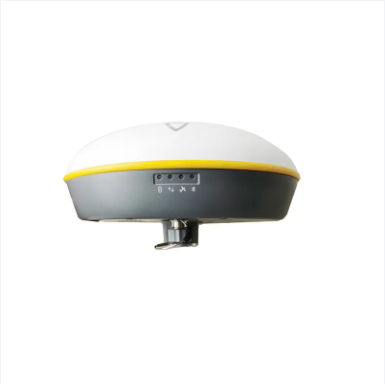衛星ジオメトリのエラーと軽減技術
精度希釈(DOP)値の理解
精度の減衰(Dilution of Precision)または一般的にDOPと呼ばれるものは、GNSSシステムが対象の正確な位置を特定する際にその性能に大きく影響します。基本的には、DOPは衛星が互いにどのくらい適切な位置に配置されているか、または正確な測定が困難になるような配置になっているかを示します。主なカテゴリを以下に説明します:HDOPは平面上での水平方向の測位精度に関係し、VDOPは地表上での高さといった垂直方向の測定に焦点を当てます。また、GDOPはこれらの要素を総合的に捉えた指標です。多くの専門家はDOP値が1〜3の範囲にある場合を重視します。これは衛星配置がしっかりしていることを示します。ただし、DOP値が6を超える数値になると、その時点での衛星配置が最適でなく、信頼できるGPS情報が得にくくなる傾向があります。
不良な衛星ジオメトリがRTK精度をどのように低下させるか
衛星の幾何学的配置が十分でないと、DOP値が大きくなり、これにより測位誤差が明らかに悪化するため、RTKの精度が著しく損なわれます。衛星が空に現れる角度もまた重要であり、この角度によって座標計算のばらつきがどのように広がるかに影響を与えるからです。実際のデータを分析すると、衛星の配置が適切でない場合、数センチメートル単位の誤差が生じることがわかります。この問題は、超高層ビルに囲まれた都市部や樹木が信号を至る所で遮る森林地帯といった、信号遮蔽の起こりやすい環境ではさらに深刻になります。超高層ビルが立ち並ぶ都市中心部を考えてみてください。このような場所では建物が衛星信号の邪魔をして、信号が直接降りてくるのではなく反射を繰り返しながら届くため、信号が乱れやすくなります。このような理由から、これらの問題点を理解しておくことで、専門家は事前に問題の発生を予測し、運用中に重大なトラブルに発展する前に解決策を講じることが可能になります。
マルチコンステレーション受信機による可視性の最適化
多星座GNSS受信機を使用すると、GPS、GLONASS、Galileo、BeiDouなど複数の衛星ネットワークを利用できるため、RTK精度が実際に向上します。これにより、任意の時点で利用可能な衛星数が増加し、衛星配置の不良による誤差を削減できます。すべての星座を統合することでDOP値(位置精度の指標)が低下することが研究で示されており、特に樹木や建物、その他の障害物が信号を遮る環境において効果的です。たとえば農業作業や土地測量では、これらの分野で活動する多くの専門家が、機器が複数の衛星システムをサポートすることで位置測定値が大幅に改善したと報告しています。測定精度が一貫して求められる実際の現場では、この違いが成果に大きく影響します。
マルチパス干渉: その原因と解決策
都市部/過酷な環境における信号反射
GNSS信号が建物や丘などの反射物に当たって受信機に届くと、マルチパス干渉と呼ばれる現象が発生します。この問題は、特に都市部や起伏のある地形でRTK GNSSの精度に深刻な影響を与えることがあります。反射物が多く存在するこのような環境では、同一信号の複数のコピーが異なるタイミングで到達し、受信機を混乱させ、測定精度が低下します。研究者たちはニューヨーク市でのこの問題を調査した結果、高層ビルがGNSSシステムにとって深刻な障害となることを確認しました。これらの高い構造物からの反射信号によって、かなり大きな誤差が生じることがあります。こうした理由から、エンジニアは厳しい環境下でも信頼できる位置情報を得るために、マルチパス干渉に対抗するより優れた方法を必要としています。
キャリア位相測定値への影響
マルチパス信号が関与すると、搬送波位相測定に乱れが生じ、RTKソリューションに問題が発生します。コード位相測定はこのような干渉の影響をそれほど受けませんが、搬送波位相は衛星と受信機との間の実際の距離を算出するため非常に高い精度が求められます。問題は、マルチパスが発生している状況ではさまざまな誤差が混入することです。状況によっては、数センチメートルレベルから数メートルレベルの誤差が生じることもあります。都市部では状況がさらに悪化し、高層ビルによって信号が反射されまくるため、どの信号がどこから来たのかを正確に把握することがほぼ不可能になります。このような状況は、密集した都市部で信頼できる測定値を得ようとしている人々にとって非常に厄介な問題を引き起こします。
マルチパス低減のための先進的なアンテナ設計
より優れたアンテナ設計は、GNSSの精度を大幅に向上させるのに役立つ多重経路干渉問題の軽減において重要な役割を果たします。チョークリングアンテナを例に挙げると、これらの特殊設計には金属製のグラウンドプレーンと吸収材が組み込まれており、多重経路問題に対しても効果的に機能します。これらのアンテナが目立つ理由は、位相中心の安定性が向上し、方向性感度によって直接の衛星信号を狙い撃ち、建物や他の表面からの厄介な反射波を遮ることができる点です。いくつかのメーカーによる実地試験によると、これらの新しいアンテナ技術により、伝統的なアンテナが性能に課題を抱える都市環境において、RTKの精度を約30%、あるいはそれ以上高めることも可能です。GPSに依存するシステムがさまざまな業界でますます一般的になるにつれて、アンテナ技術の継続的な改良は、機器がどの種類の地形や環境に置かれた場合でも信頼できる測位結果を維持するために不可欠です。
大気遅延について RTK GNSS システム
イオノスフェア遅延とトロポスフェア遅延の特性
大気は主に2つの理由によってRTK GNSSシステムに問題を引き起こします。それは電離層および対流圏の遅延です。衛星からの信号が電離層を通過する際、そこには多数の帯電粒子が存在するため、信号は散乱され、到達が遅延します。これは太陽活動が活発なときに特に顕著になります。一方、対流圏による遅延は別のメカニズムで起こります。これは地表付近での気象条件や湿度が信号のタイミングに影響を与えるためです。研究によれば、電離層の影響により測定値が1メートルから10メートルもの誤差を生じることがあります。対流圏の影響はそれほど深刻ではありませんが依然として重要であり、通常は0.5メートルから2メートル程度の誤差を引き起こします。このような時間的なずれはRTKの測位精度に大きな影響を与えるため、エンジニアは機器から信頼性の高い結果を得るために、これらの誤差を補正する効果的な方法を用いる必要があります。
大気補正用デュアル周波数受信機
ダブル周波数受信機は、厄介な大気遅延に対抗するのに役立ち、RTK精度を大幅に向上させます。これらの機器は2つの異なる周波数の信号を受信し、オペレーターが面倒な電離層遅延を計算して補正できるようにします。実際の現場テストでは、ダブル周波数方式はシングル周波数方式よりも優れており、天候が不安定な状態で誤差を半分にまで減らす場合もあります。ダブル周波数GNSS受信機の導入には初期費用が多少高額になるというデメリットがありますが、精度が重要な作業においては、その精度の向上が非常に大きな意味を持ちます。そのため、多くの農家や建設作業チームは、初期投資が多少多くなることにもかかわらず、この技術への投資が価値あるものと考えています。
リアルタイム電離層モデルの活用
Klobucharモデルその他のリアルタイム電離層モデルは、信号を乱す厄介な大気遅延を予測するのに役立つため、RTK GNSSの性能向上において重要な役割を果たしています。これらのモデルは、現在のデータ測定値を取り込み、電離層内でどの程度の信号遅延が発生するかを予測することで作動し、GNSS全体の精度を高めるための補正を可能にします。さまざまなRTK応用分野での実地試験により、これらのモデルは特に電離層が攪乱されやすい地域、例えば極地方や太陽嵐の際に特に効果的であることが示されています。運用者がこれらのモデルをRTKシステムに組み込むと、通常はより良い結果が得られ、システムをスムーズに動作させ続けることができ、正確な位置情報を頼りにしている人にとって不可欠な要素となります。実際、利用可能なモデルにはさまざまな種類があり、それぞれ異なる状況に適しています。都市部での環境ではあるモデルがより効果を発揮する一方、遠隔地では別のモデルが優れている場合もあり、最大限の効果を得るためにどのモデルを選ぶかは、主に応用目的に大きく依存します。
ベース局の構成エラーとその防止
ベース局の位置精度の重要性
基準局の設置位置を正確に決めることが、RTKシステムの実際の精度において非常に重要です。基準局の設置位置に数センチ程度の小さな誤差が生じただけでも、システム全体に悪影響を及ぼすことがあります。端末機(ローバー)が自身の位置を何メートルも誤って認識してしまう場合があり、農業作業やミリ単位の精度が求められる建設プロジェクトなど、精密さが重要な分野においては大きな誤差となります。基準局の座標に誤りがあることが原因で、その小さな誤差がネットワーク全体に拡大されて、後工程で重大な問題を引き起こしたケースも実際にあります。現場の設置作業においては、まず適切な評価を行う必要があります。衛星を遮る障害物のない空の見通しの良い場所を選び、常に既存の補正ネットワークが近くにあるかどうかを確認し、基線データの精度向上に活用するようにしましょう。こうした基本的なステップを踏むことで、長期的にみて時間と費用を節約することにつながります。
一般的なセットアップおよびデータ伝送の落とし穴
ベースステーションの設置時には、構成の誤りやGPS信号の遮断などにより、データの一貫性に問題が生じることがよくあります。座標の入力ミスやアンテナの設置位置の誤りは、RTKの精度に大きく影響を与えます。RTK作業の継続性においては、データの途切れることのない送信が非常に重要です。送信中の途切れや干渉があると、誤差が拡大し、実際の位置と記録された位置との間に大きなギャップが生じることになります。定期的なチェックとステーション設定の更新により、こうした問題の多くを未然に防止できます。業界の専門家は、堅牢な送信プロトコルの導入やバックアップ通信経路の準備も推奨しています。こうした対策により、信頼性の高いデータを必要時に確保することが可能になります。
信頼性向上のためのネットワークRTKソリューション
ネットワークRTKソリューションは、面倒なローカルベース局の誤差を補正する際に真価を発揮します。これは、はるかに広い範囲に補正信号を展開する仕組みになっているためです。1点だけに依存するのではなく、複数のベース局を同時に使用して動作するため、補正が即座に行われ、データの信頼性が、誤差を生じやすい単一局方式よりもはるかに高くなります。ネットワークRTKの優れている点は、ビルによる信号遮蔽や大気の変化といった難しい環境要因に対応しながらも、非常に高い精度で結果を得られることです。都市開発プロジェクトから、作物を正確に必要な場所に植えようとする農場に至るまで、さまざまな現場でネットワークRTKが活用されています。状況が理想的でなくても、この技術はセンチメートル単位での測定を確実に実現します。建設業や農業など、GPSの精度が非常に重要となる分野で働く人にとっては、今やネットワークRTKはほぼ必須の存在となっています。
よくある質問
GNSSシステムにおける精度希釈(DOP)とは何ですか?
精度希薄化(DOP)は、衛星の幾何学的配置の強さとGNSSシステムにおける位置測定精度への影響を反映する指標です。DOPには、水平(HDOP)、垂直(VDOP)、幾何学的(GDOP)などVariousな種類があります。
衛星の配置が悪い場合、RTKの精度にどう影響しますか?
衛星の配置が悪いとDOP値が増加し、これにより位置測定誤差が大きくなります。特に都市の峡谷や密集した森林など、信号遮断が一般的な環境ではRTKの精度に大きく影響することがあります。
GNSSシステムにおける多重経路干渉とは何ですか?
多重経路干渉は、GNSS信号が受信機に到達する前に建物や地形などの表面で反射することによって発生します。これは特に都市部や険しい地形の環境において位置測定精度を低下させます。
大気補正のために、なぜデュアル周波数受信機が重要ですか?
デュアル周波数受信機は、2つの周波数で信号を捕捉し、イオノスフェア遅延の計算と補正に役立ちます。これによりRTKの精度が向上します。単一周波数システムと比較して、悪条件での精度は約50%向上します。
ネットワークRTKソリューションはどのように信頼性を高めますか?
ネットワークRTKソリューションは、複数のベースステーションのネットワークを使用して広域にリアルタイム補正を提供し、困難な環境条件下でもデータの信頼性と精度を向上させます。

